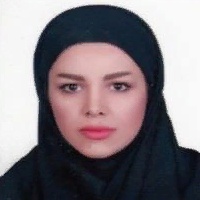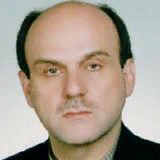International Journal of Image, Graphics and Signal Processing (IJIGSP)
IJIGSP Vol. 7, No. 4, 8 Mar. 2015
Cover page and Table of Contents: PDF (size: 894KB)
Intelligent Geometric Classification of Irregular Patterns via Probabilistic Neural Network
Full Text (PDF, 894KB), PP.19-27
Views: 0 Downloads: 0
Author(s)
Index Terms
Pattern Recognition, Neural Network, Feature Extraction, Distance Histogram
Abstract
This paper deals with interpretation of patterns via neural networks under organization and classification approaches. Fifty different groups of images including geometric shapes, mechanical instruments, machines, animals, fruits, and other classes of samples are classified here in two successive steps. Each primary category is divided into three different sub-groups. The purpose is identifying the class and sub-class of each input sample. Nowadays, industry and manufacturing are moving towards automation; hence accurate description of photos results in a myriad of industrial, security, and medical applications and takes a pressing part in artificial intelligence's progression. Intelligent interpretation of structure's design in CNC machine eventuates in autonomous selection of cutting tools by which any structure can easily be manufactured. Anyhow, this paper comes up with a pattern interpretation method to be applied in submarine detection purposes. Remotely operated vehicles (ROV) are used to detect and survey oil pipelines and underwater marine structures, so mentioned neural network classification is a practicable tool for detection mechanism and avoiding obstacles in ROVs.
Cite This Paper
Sogand Hoshyarmanesh, Mohammadreza Fathikazerooni, Mohsen Bahrami,"Intelligent Geometric Classification of Irregular Patterns via Probabilistic Neural Network", IJIGSP, vol.7, no.4, pp.19-27, 2015. DOI: 10.5815/ijigsp.2015.04.02
Reference
[1]Ou, G. and Y.L. Murphey, Multi-class pattern classification using neural networks. Pattern Recognition, 2007. 40(1): p. 4-18.
[2]Chen, L., W. Xue, and N. Tokuda, Classification of 2-dimensional array patterns: Assembling many small neural networks is better than using a large one. Neural Networks, 2010. 23(6): p. 770-781.
[3]Cruz, J., et al., Stereo matching technique based on the perceptron criterion function. Pattern recognition letters, 1995. 16(9): p. 933-944.
[4]Glass, J.O. and W.E. Reddick, Hybrid artificial neural network segmentation and classification of dynamic contrast-enhanced MR imaging (DEMRI) of osteosarcoma. Magnetic resonance imaging, 1998. 16(9): p. 1075-1083.
[5]Lampinen, J. and E. Oja, Distortion tolerant pattern recognition based on self-organizing feature extraction. Neural Networks, IEEE Transactions on, 1995. 6(3): p. 539-547.
[6]Shustorovich, A., A subspace projection approach to feature extraction: the two-dimensional Gabor transform for character recognition. Neural Networks, 1994. 7(8): p. 1295-1301.
[7]Kepuska, V.Z. and S.O. Mason, A hierarchical neural network system for signalized point recognition in aerial photographs. Photogrammetric engineering and remote sensing, 1995. 61(7): p. 917-925.
[8]Suganthan, P. and H. Yan, Recognition of handprinted Chinese characters by constrained graph matching. Image and Vision Computing, 1998. 16(3): p. 191-201.
[9]Fukumi, M., S. Omatu, and Y. Nishikawa, Rotation-invariant neural pattern recognition system estimating a rotation angle. Neural Networks, IEEE Transactions on, 1997. 8(3): p. 568-581.
[10]Patel, D., E. Davies, and I. Hnnah, The use of convolution operators for detecting contaminants in food images. Pattern Recognition, 1996. 29(6): p. 1019-1029.
[11]Williams, C.K.I., M. Revow, and G.E. Hinton, Instantiating deformable models with a neural net. Computer vision and image understanding, 1997. 68(1): p. 120-126.
[12]Jiang, X. and A. Harvey Kam Siew Wah, Constructing and training feed-forward neural networks for pattern classification. Pattern Recognition, 2003. 36(4): p. 853-867.
[13]Aizenberg, I., et al., Cellular neural networks and computational intelligence in medical image processing. Image and Vision Computing, 2001. 19(4): p. 177-183.
[14]Thamarai Selvi, S., S. Arumugam, and L. Ganesan, BIONET: an artificial neural network model for diagnosis of diseases. Pattern recognition letters, 2000. 21(8): p. 721-740.
[15]Ölmez, T. and Z. Dokur, Classification of heart sounds using an artificial neural network. Pattern recognition letters, 2003. 24(1): p. 617-629.
[16]Zhao, Z.-Q., D.-S. Huang, and B.-Y. Sun, Human face recognition based on multi-features using neural networks committee. Pattern recognition letters, 2004. 25(12): p. 1351-1358.
[17]Meesad, P. and G.G. Yen, Pattern classification by a neurofuzzy network: application to vibration monitoring. ISA transactions, 2000. 39(3): p. 293-308.
[18]Li, Y., et al., Learning-induced pattern classification in a chaotic neural network. Physics Letters A, 2011.
[19]Vapnik, V.N., An overview of statistical learning theory. Neural Networks, IEEE Transactions on, 1999. 10(5): p. 988-999.
[20]Vapnik, V., The nature of statistical learning theory1999: springer.
[21]Liao, Y., S.C. Fang, and H. LW Nuttle, A neural network model with bounded-weights for pattern classification. Computers & Operations Research, 2004. 31(9): p. 1411-1426.
[22]Jin, Q., Y. Huang, and N. Fan, Learning images using compositional pattern-producing neural networks for source camera identification and digital demographic diagnosis. Pattern recognition letters, 2012. 33(4): p. 381-396.
[23]De Carvalho, A., M. Fairhurst, and D. Bisset, An integrated Boolean neural network for pattern classification. Pattern recognition letters, 1994. 15(8): p. 807-813.
[24]Bacauskiene, M. and A. Verikas, Selecting salient features for classification based on neural network committees. Pattern recognition letters, 2004. 25(16): p. 1879-1891.
[25]Takano, M., et al., A note on a higher-order neural network for distortion invariant pattern recognition. Pattern recognition letters, 1994. 15(6): p. 631-635.
[26]Verikas, A. and M. Bacauskiene, Feature selection with neural networks. Pattern recognition letters, 2002. 23(11): p. 1323-1335.
[27]Wang, Y., et al., Feature selection using tabu search with long-term memories and probabilistic neural networks. Pattern recognition letters, 2009. 30(7): p. 661-670.
[28]Meyer-B?se, A. and R. Watzel, Transformation radial basis neural network for relevant feature selection. Pattern recognition letters, 1998. 19(14): p. 1301-1306.
[29]Bruzzone, L. and S. Serpico, Classification of imbalanced remote-sensing data by neural networks. Pattern recognition letters, 1997. 18(11): p. 1323-1328.
[30]Nadir Kurnaz, M., Z. Dokur, and T. Ölmez, Segmentation of remote-sensing images by incremental neural network. Pattern recognition letters, 2005. 26(8): p. 1096-1104.
[31]Lin, C.-Y. and S.-H. Lin, Artificial neural network based hole image interpretation techniques for integrated topology and shape optimization. Computer Methods in Applied Mechanics and Engineering, 2005. 194(36): p. 3817-3837.
[32]Li, Y., et al., Learning-induced pattern classification in a chaotic neural network. Physics Letters A, 2012. 376(4): p. 412-417.
[33]Paliwal, M. and U.A. Kumar, Neural networks and statistical techniques: A review of applications. Expert Systems with Applications, 2009. 36(1): p. 2-17.
[34]Yu, D. and L. Deng, Efficient and effective algorithms for training single-hidden-layer neural networks. Pattern recognition letters, 2012. 33(5): p. 554-558.


